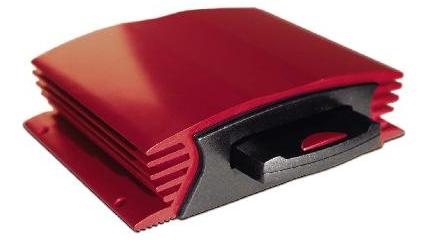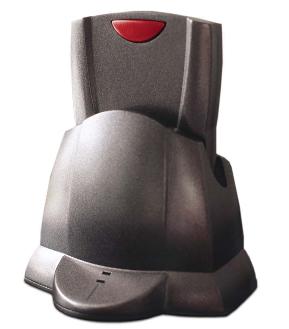Article: Device profile: PhatNoise PhatBox car mp3 player
Nov 1, 2000 — by Rick Lehrbaum — from the LinuxDevices Archive — 8 viewsDannie Lau, CEO of the company he co-founded in 1999 along with two other UCLA Electrical Engineering graduates, sums up the mission of PhatNoise this way: “As music enthusiasts, we were frustrated by the limited storage and scalability of today's portable digital audio players. So we've gone beyond those concepts and quite literally looked down the road to design products that help users save and sync… incredible quantities of high-quality digital audio from their desktop systems for playback using their own car stereos.”
That vision led the company to develop the PhatBox car audio system, which won “best overall product” at the Third Annual MP3 Summit earlier this year. The innovative device lets consumers take high quality audio files from their PCs, and play them using the existing sound system of their cars. It's basically an mp3 jukebox, powered by an internal computer running Embedded Linux, that emulates a car CD changer.
Product overview
The PhatBox car audio player is roughly the same size as a car stereo amplifier (8.5 x 2.5 x 6.5 in.) and can be installed under a seat, in the glove box, or in the trunk. It is designed to work in conjunction with any car stereo that has an interface to an external CD changer. Most after-market car stereo head units support external CD changers, as do many factory-installed systems.

The mp3 files played by the PhatBox are stored in the PhatCart, a removable cartridge that contains a 2.5-inch (laptop style) ATA hard disk drive. Storage capacity ranges from 5GB, which can hold approximately 100 CDs worth of music, to 20GB and beyond. The PhatCart data cartridge connects to a PC via USB, using a docking station called the PhatDock (see photo, below). File management software on the PC called — you guessed it — PhatMan is used to copy mp3 files into the cartridge and to manage play lists. The same software also provides connection to the DailyPhat.com website, which offers a convenient mp3 search engine. At present, the system currently also supports Windows Media Audio (WMA) and wave (WAV) files, and PhatNoise intends to provide support for other file formats in the future.

Technical specifics
Operation of the PhatBox is based on an internal embedded Linux computer. The device is primarily controlled by a 74MHz Cirrus Logic EP7212 system-on-chip processor. It also contains a 24MHz 8051 microcontroller, which is used to handle housekeeping functions including managing the interface to the car stereo's head unit. A 16-bit digital-to-analog converter produces the high quality analog audio that is routed to the CD changer input of the car stereo's head unit.
Although the Cirrus EP7212 processor has a built-in LCD display controller, the PhatBox itself has no display. Instead, the car stereo's front panel display is used for outputting any messages. True to its goal of emulating a standard CD changer, the PhatBox sends ID3 tag information associated with each currently playing audio clip to the car stereo head unit, thereby enabling the display of artist/song/genre information just as would accompany the playing of a real CD.
The PhatBox's embedded software consists of a customized Linux kernel, device drivers, and control software, plus a highly specialized “firmware” program that controls the 8051 microcontroller. Thanks to availability of Linux source code (which was one key reason for using Linux), PhatNoise for the most part did their own port of the Linux kernel to the Cirrus EP7212. According to CEO Dannie Lau, another key reason for using Linux was its cost — free! Plus, some members of the development team had used Linux previously, and liked it.
An interesting capability of the PhatBox is that its internal Linux operating system, 8051 firmware, and programmable logic configuration are all in-system upgradeable. This feature will ensure that the device can track evolving audio compression standards, and will also enable adapting the product to additional car stereo makes and models. Upgrades will be downloaded from the PhatNoise website via the PhatMan software. The system update will be written into the PhatCart cartridge; then, when the cartridge containing the update is inserted into the PhatBox, the device will automatically install the desired update.
The PhatBox's external input/output interfaces are very simple: the slot for the PhatCart cartridge contains standard IDE hard drive interface signals; the connector that carries the interface to the car stereo's CD changer port contains audio, digital control signals, and DC power. Although the Cirrus EP7212 processor has a pair of on-chip 16550-type UARTs, the two serial ports are not accessible externally. That won't matter to normal users, but it will represent a slight challenge to those among the Linux community who are eager to drill down “inside” the PhatBox in order to customize and enhance it.
Where can I get one and what does it cost?
At the time of this writing, production units of the PhatBox are said to be on their way to the US from the assembly plant in Taiwan, and are expected to be “on the shelves in time for this year's holiday season”. Initial pricing for the system is $499, which includes the PhatBox car mp3 player, the PhatDock docking station, a 5GB PhatCart data cartridge, and the PhatMan PC software.
This article was originally published on LinuxDevices.com and has been donated to the open source community by QuinStreet Inc. Please visit LinuxToday.com for up-to-date news and articles about Linux and open source.